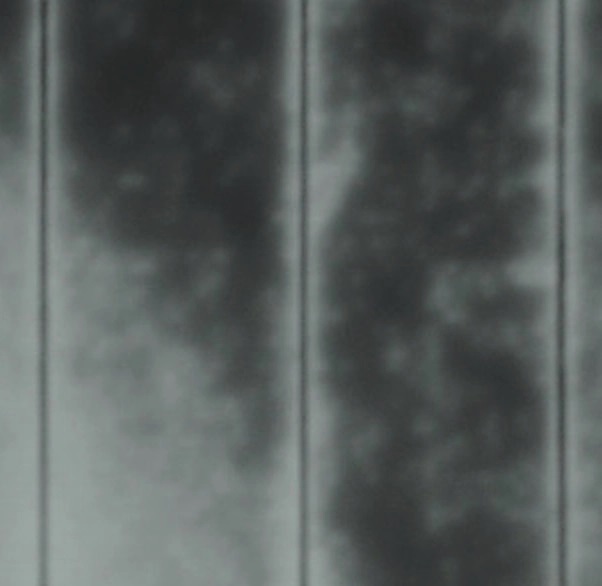From pv magazine Global
Researchers at the Netherlands Organisation for Applied Scientific Research (TNO) have conducted a series of damp heat tests to assess the impact, in terms of moisture degradation, of different encapsulation materials on performance losses in bifacial PV modules.
“The purpose of this research was to find an explanation for degradation phenomena observed in small laboratory bifacial module samples after extended damp heat testing,” the research’s lead author, Paul Sommeling, told pv magazine.
In the study “Corrosion effects in bifacial crystalline silicon PV modules; interactions between metallization and encapsulation,” published in Solar Energy Materials and Solar Cells, the scientists made a comparison between three encapsulant materials used in PV module production: ethylene vinyl acetate (EVA), polyolefin elastomers (POE) and thermoplastic polyolefins (TPO).
The research group said it observed in previous studies that POE and TPO, unlike EVA, do not release any acidic components, which means they may perform better than EVA with respect to acid-induced corrosion. However, there is no proven evidence yet that these materials may actually result in increased module durability in the field, as it takes a long time before relevant field degradation can be observed.
Through damp heat testing with a duration of up to 2,500 h, the academics compared the performance of the three materials in glass-encapsulant-cell-encapsulant-glass-based laminates without the use of an edge sealant.
“Commercially available n- or p-type bifacial cells (TOPCON and PERC respectively) have been used to build these laminates, which have subsequently been tested in a climate chamber under damp heat conditions (85 C/85% relative humidity),” they explained. “Current-voltage (IV) and electroluminescence (EL) measurements have been conducted at 500 h intervals to follow the change of laminate characteristics over time.”
They used a technique known as “coring” to enable post-mortem analyses of all samples tested. For this, they used scanning electron microscopy (SEM) and Energy-dispersive X-ray spectroscopy (EDX) to analyze the effects of the tests on the solar cell surface. All encapsulants were tested according to the IEC 61215 PV standard and beyond, with extended testing time.
According to the research group, the testing showed that hydrophobic and chemically inert TPO encapsulants provided the highest degree of protection against moisture-induced degradation compared to EVA and POE. It also indicated that front-side metallization of the n-type TOPCon cells tested is more prone to acid- or moisture-induced degradation than their p-type counterparts.
“This front-side metallization of TOPCon cells degraded faster than the rear-side metallization and also faster than the metallization of PERC cells in EVA-based laminates,” the scientists emphasized. “We attribute those differences to the different compositions of the cell metallization applied.”
They concluded that the main factor causing delamination of the metal grid is the degradation of lead glass probably, which they said is part of the cell metallization grid and contains lead oxide (PbO).
“These results are partly surprising,” Sommeling said. “Corrosion effects in PV are known and have been reported in the literature studying both the effects after field exposure and after accelerated testing in the laboratory.”
He also explained that the most severe corrosion problems are to a large extent related to the release of acetic acid from EVA, the most widely used encapsulating material in PV panels. The acid causes corrosion of cell metallization and/or tabbing material or solder joints. Currently, EVA is being replaced by alternatives that do not release any acidic compounds and this helps to prevent a lot of problems related to corrosion.
“The surprising or ‘new’ aspects described in our paper consider the quite striking differences observed between different types of metallization and different solar cells with respect to corrosion behavior, which can be correlated to different compositions of the cell metallization,” Sommeling added. “Also without acids present, corrosion still can occur just by the influence of moisture and again this is widely varying between the different types of metallization applied.”
“It can be concluded that the specific combination of the n-type TOPCon solar cells studied in our paper in combination with EVA is probably a higher risk one, compared to other combinations of cell types and encapsulants,” Sommeling affirmed. “Application of EVA in combination with relatively high corrosion susceptible metallization should and can actually be avoided. Alternatively, if the more corrosion-resistant metallization types identified can be applied to TOPCon solar cells, this should also help in building more corrosion-resistant n-type PV panels.”
This content is protected by copyright and may not be reused. If you want to cooperate with us and would like to reuse some of our content, please contact: editors@pv-magazine.com.









By submitting this form you agree to pv magazine using your data for the purposes of publishing your comment.
Your personal data will only be disclosed or otherwise transmitted to third parties for the purposes of spam filtering or if this is necessary for technical maintenance of the website. Any other transfer to third parties will not take place unless this is justified on the basis of applicable data protection regulations or if pv magazine is legally obliged to do so.
You may revoke this consent at any time with effect for the future, in which case your personal data will be deleted immediately. Otherwise, your data will be deleted if pv magazine has processed your request or the purpose of data storage is fulfilled.
Further information on data privacy can be found in our Data Protection Policy.